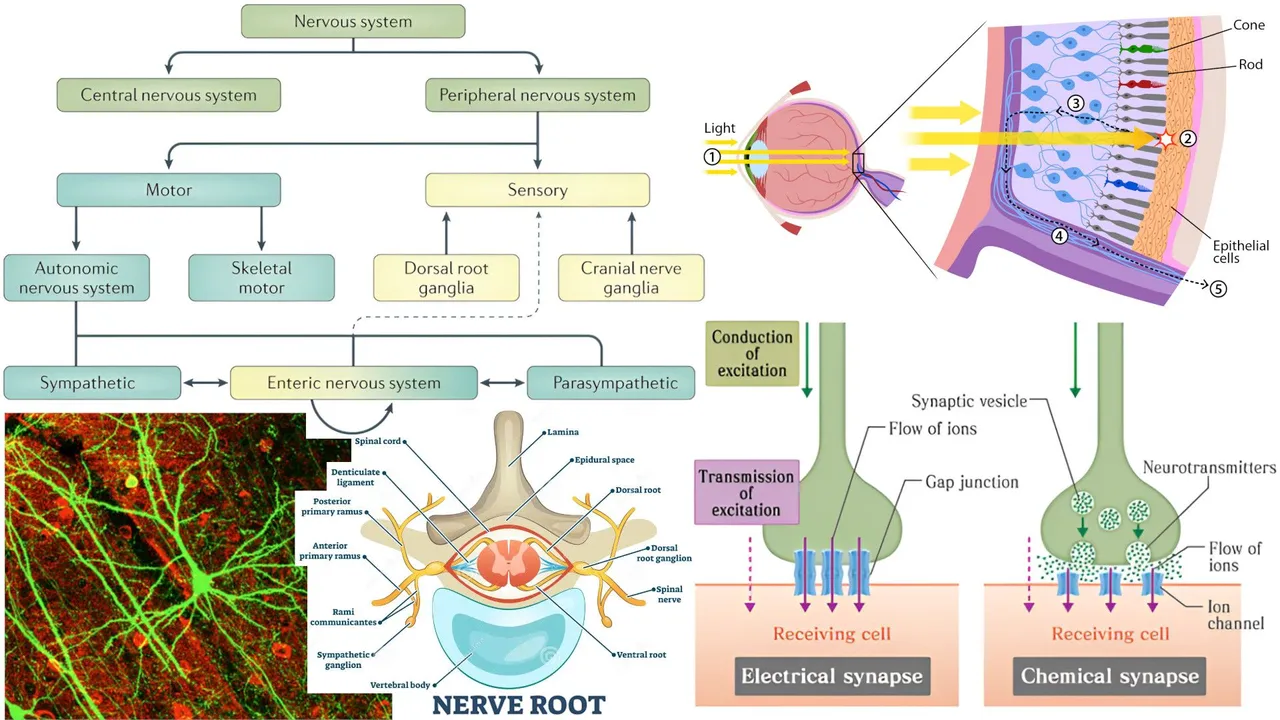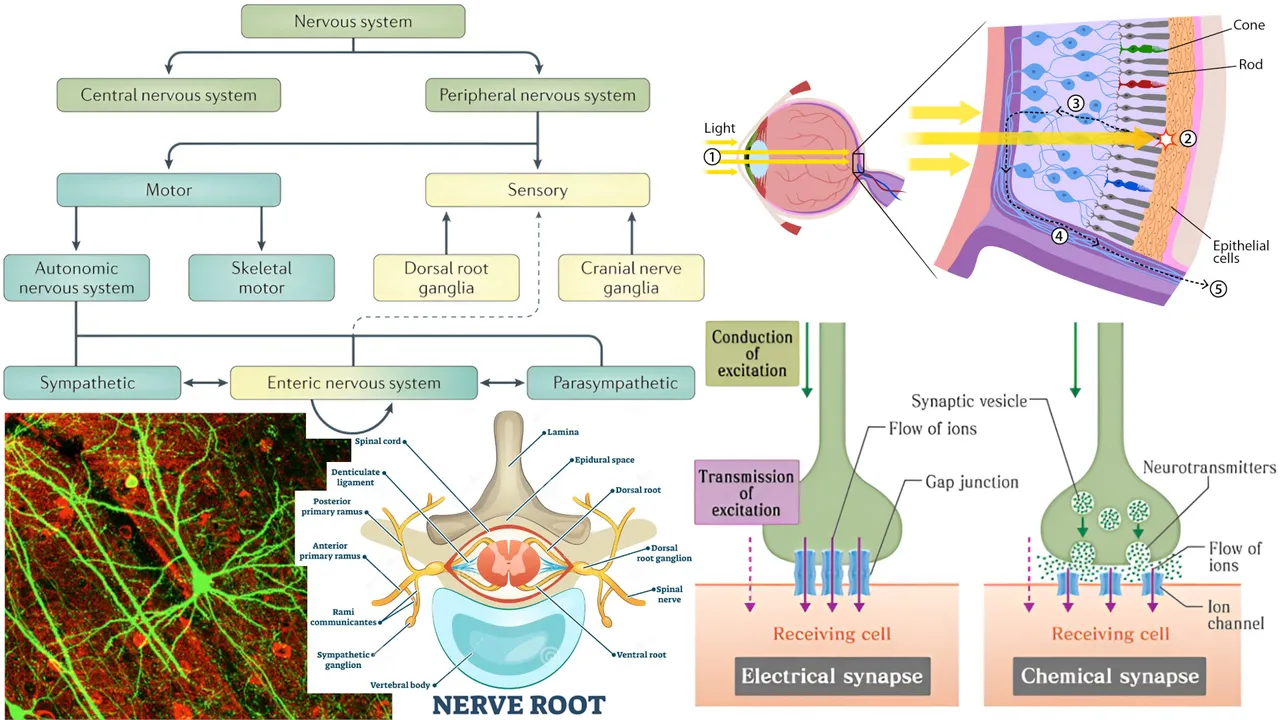In this video I go over the nervous system, which is a complex network of neurons (and glial cells for structural and metabolic support) that process sensory information and generate behaviors. Neurons transmit signals through electrical and chemical synapses, which have narrow gaps, called gap junctions, between cells of 3.8 nm distance for electrical synapses and 20 to 40 nm for chemical synapses. Electrical synapse transmit ions while chemical synapses transmit neurotransmitter molecules. The nervous system for most vertebrates consist of the central nervous system (CNS) (brain and spinal cord), and the peripheral nervous system (PNS), which consists of nerves that connect the body to the CNS. Motor nerves transmit signals from the CNS to the body while sensory nerves transmit from the body to the CNS. The PNS is further subdivided into the somatic, autonomic, and enteric nervous systems. Somatic nerves mediate voluntary movement. The enteric nervous system controls the gastrointestinal system, and which often gets the gut being referred to as the "second brain". The autonomic system is activated in case of emergencies (sympathetic system), or when in a relaxed state (parasympathetic system). Both the enteric and autonomic systems are involuntary.
Finally, I discuss sensory receptors, such as those that sense pressure changes (mechanoreceptors), those that detect changes in light (photoreceptors), or chemoreceptors which detect chemicals in the mouth (taste) or air (smell). I also dive into how the human eye is literally a camera!
#science #biology #nervoussystem #animals #education

Timestamps
- Nervous system is a network of cells that process information from the senses and affects behavior: 0:00
- Diagram of a gap junction, allowing for ion and molecule transmission between cells (neurons): 3:44
- Nervous system of most vertebrates consists of the central nervous system (CNS) (brain and spinal cord) and the peripheral nervous system (PNS) (nerves that connect the CNS to the body): 8:35
- Categorization of the nervous system: PNS splits into the Motor (signals go from the CNS) and Sensory systems (signals go to the CNS): 11:51
- Spinal nerve root diagram: 15:57
- Diagram of photoreceptor cells in the retina, which convert light into electrical signals, and the rods (dark light) and cones (brighter light): 20:11
- Image gets flipped by the lens in the high before the brain corrects it: 22:00
Full video below
- Summary: @mes/re-leothreads-fwau49wa
- Full video and playlist: https://www.youtube.com/playlist?list=PLai3U8-WIK0FYO6bxFbBAtVJ9sDOJnH72
- Notes: @mes/messcience-3-overview-of-biology
- MES Science playlist: https://www.youtube.com/playlist?list=PLai3U8-WIK0GhjCHmTw1XbqMD_EdVKdd9 .
Become a MES Super Fan! https://www.youtube.com/channel/UCUUBq1GPBvvGNz7dpgO14Ow/join
DONATE! ʕ •ᴥ•ʔ https://mes.fm/donate
SUBSCRIBE via EMAIL: https://mes.fm/subscribe
MES Links: https://mes.fm/links
MES Truth: https://mes.fm/truth
Official Website: https://MES.fm
Hive: @mes
Email me: contact@mes.fm
Free Calculators: https://mes.fm/calculators
BMI Calculator: https://bmicalculator.mes.fm
Grade Calculator: https://gradecalculator.mes.fm
Mortgage Calculator: https://mortgagecalculator.mes.fm
Percentage Calculator: https://percentagecalculator.mes.fm
Free Online Tools: https://mes.fm/tools
iPhone and Android Apps: https://mes.fm/mobile-apps
▶️ 3Speak
